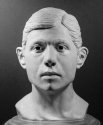lucidtx
Western CO
- Joined
- Mar 31, 2010
- Messages
- 609
- Reaction score
- 7,552
NamUs #10738
Doe Network Case#2530
Date of Discovery: June 19, 1970
Location of Discovery: Twin Lakes, Lake County, Colorado
Estimated Date of Death: 1969 to 1970
State of Remains: Not recognizable - Decomposing/putrefaction
Cause of Death: Unknown
Estimated Age: 18-30 years old
Race: White
Gender: Male
Height: 5'6" to 5'8"
Weight: 120-150 lbs.
Hair Color: Brown, possibly dark.
Eye Color: Unknown
Distinguishing Marks/Features: Unknown
Dentals: Available. [Per newspaper report from the time, teeth were in good condition with gold/platinum fillings. Available will be entered later per NamUs]
Fingerprints: Not available. [Available elsewhere, per NamUs]
DNA: Not available. [Submitted, Tests Complete per NamUs]
Clothing: According to a newspaper report - Tattered sweatshirt, gray trousers, three pairs of socks, and tennis or hiking shoes (possibly jungle boots) with an unworn sock over the left shoe. Sheriff's report states he was wearing a pair of light-colored wash and wear pants, a sweatshirt and a pair of black loafers.
Jewelry: Unknown
Additional Personal Items: According to the Sheriff's report he had seven dollars and a razor in his pocket.
Two men hiking two miles east of Independence Pass Summit discovered the victim's decomposed remains in a ditch alongside the road. [This is a pretty remote location, he was found at least 11,000-11,400 ft+ from what I can tell on a topo map. Close towns include Twin Lakes (and Twin Lakes Reservoir), Aspen and Leadville. The pass is one of the highest in Colorado and the nation and closes in the winter. It had just been paved in 1967 and although there was a kind of a population boom in the area at the time with increased tourism and mining, you're still talking well under 20,000 people living in either Lake or neighboring Pitkin county around that time. There is very good fishing at nearby Twin Lakes Reservoir and the various nearby rivers and creeks, and of course the area is famous for skiing, hiking, 14ers, etc.] The torso was covered by a rockfall. He was missing his left arm. It is possible that his arm was removed by a snowplow, however it was not determined whether or not the arm injury occured anti-mortem [sic] or post-mortem. [A newspaper article mentions his left sleeve was rolled up and that investigators were considering the possibility it was an amputation/antemortem, but it also mentions the rib cage was missing.]


Doe Network Case#2530
Date of Discovery: June 19, 1970
Location of Discovery: Twin Lakes, Lake County, Colorado
Estimated Date of Death: 1969 to 1970
State of Remains: Not recognizable - Decomposing/putrefaction
Cause of Death: Unknown
Estimated Age: 18-30 years old
Race: White
Gender: Male
Height: 5'6" to 5'8"
Weight: 120-150 lbs.
Hair Color: Brown, possibly dark.
Eye Color: Unknown
Distinguishing Marks/Features: Unknown
Dentals: Available. [Per newspaper report from the time, teeth were in good condition with gold/platinum fillings. Available will be entered later per NamUs]
Fingerprints: Not available. [Available elsewhere, per NamUs]
DNA: Not available. [Submitted, Tests Complete per NamUs]
Clothing: According to a newspaper report - Tattered sweatshirt, gray trousers, three pairs of socks, and tennis or hiking shoes (possibly jungle boots) with an unworn sock over the left shoe. Sheriff's report states he was wearing a pair of light-colored wash and wear pants, a sweatshirt and a pair of black loafers.
Jewelry: Unknown
Additional Personal Items: According to the Sheriff's report he had seven dollars and a razor in his pocket.
Two men hiking two miles east of Independence Pass Summit discovered the victim's decomposed remains in a ditch alongside the road. [This is a pretty remote location, he was found at least 11,000-11,400 ft+ from what I can tell on a topo map. Close towns include Twin Lakes (and Twin Lakes Reservoir), Aspen and Leadville. The pass is one of the highest in Colorado and the nation and closes in the winter. It had just been paved in 1967 and although there was a kind of a population boom in the area at the time with increased tourism and mining, you're still talking well under 20,000 people living in either Lake or neighboring Pitkin county around that time. There is very good fishing at nearby Twin Lakes Reservoir and the various nearby rivers and creeks, and of course the area is famous for skiing, hiking, 14ers, etc.] The torso was covered by a rockfall. He was missing his left arm. It is possible that his arm was removed by a snowplow, however it was not determined whether or not the arm injury occured anti-mortem [sic] or post-mortem. [A newspaper article mentions his left sleeve was rolled up and that investigators were considering the possibility it was an amputation/antemortem, but it also mentions the rib cage was missing.]





